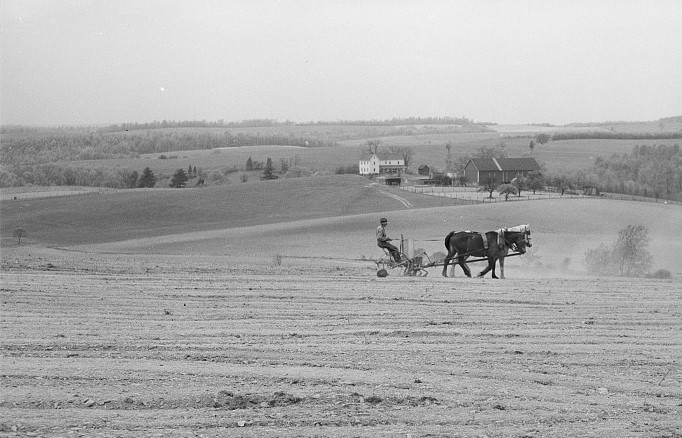Today, as the mechanized, technological world marches on, “Plow Monday,” is all but forgotten. But, the once venerated date on the early agricultural calendar is reminder of our roots — and of those who still toil to nourish us.
“Venerate the plow” – American Farmer’s Manual, 1900.
In England, much of continental Europe, and early America, Plow Monday was informally recognized as the first Monday following the Feast of the Epiphany, the traditional end of the Christmas season. Plow Monday, which often followed religious services on Plow Sunday, was the start of the new agricultural year — the date on which plows were put back into the ground.

Frederick County farmland near Jefferson, Maryland. Flickr user Mike Procario.
From that first Monday of January until the harvest, the agricultural year followed the moon, the seasons and the Earth’s subtle and at once obvious cues. American attitudes toward Plow Monday changed over time, possibly as a result of a new climate that didn’t always allow for burying the plow in early January as it had in England. What had been celebrated lost much of its shine and as the nation moved from the fields to the cities in the late 19th and early 20th century this date on the calendar was all but forgotten.
Today, in England and elsewhere around the globe, the date is still recognized and often celebrated in rural communities where agricultural still sets the calendar. In the United States, where it is all but a historical footnote, it remains an opportunity to think of the farmers who toil year-round to put food on our table.

Oxon Hill Farm at Oxon Cove National Park, Wikipedia.
Today, just 1.3% of the population is engaged in farming — compared to nearly 30% in 1920; reason enough to stop and thank those who feed the other 99% on this hallowed and historic date.
Join Preservation Maryland Today

